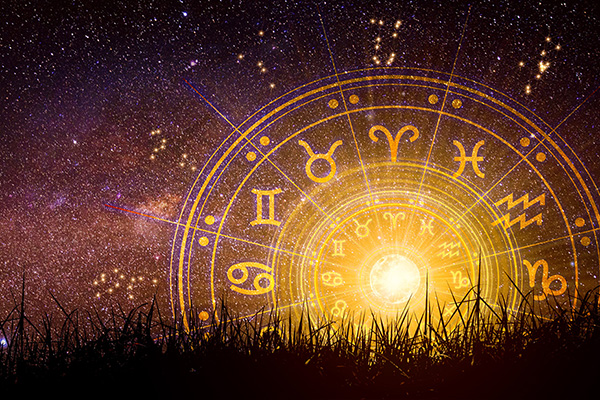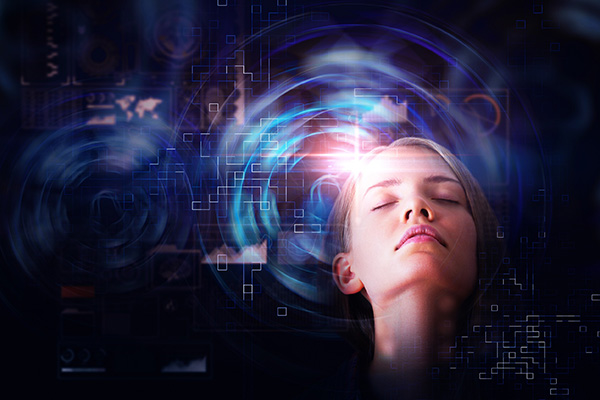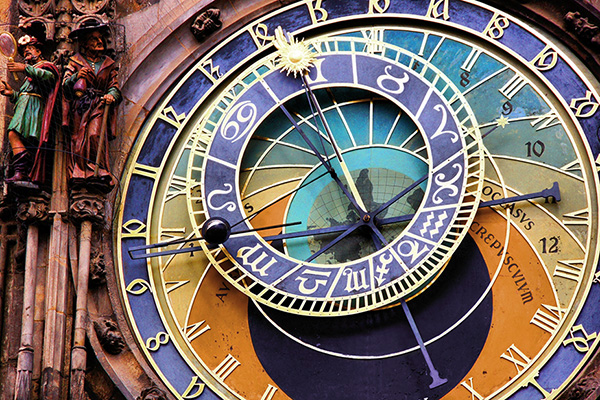Learn about the meditative practice of Sumi-e painting
 I have always had a strong interest in the ways art and spirituality come together to provide opportunities for enhanced self-awareness and serenity, both as a spiritual advisor and an artist.
I have always had a strong interest in the ways art and spirituality come together to provide opportunities for enhanced self-awareness and serenity, both as a spiritual advisor and an artist.
One such path that has had a profound impact on my life is Sumi-e painting, also known as suibokuga or ‘ink wash painting.’ It is a traditional Japanese painting technique that uses black ink, typically in varying concentrations, to create brushstroke-based works of art.
Sumi-e is characterized by its minimalism, simplicity, and emphasis on capturing the essence or spirit of the subject rather than its literal representation.
Artworks frequently showcase themes like landscapes, flowers, birds, and other elements found in nature. Artists employ diverse brush techniques to generate distinct textures, tones, and depths by solely utilizing black ink on absorbent paper or silk.
The art form has deep roots in Zen Buddhism, which emphasizes spontaneity, simplicity, and harmony with nature. Practitioners often meditate before painting to cultivate a clear and focused mind, which they believe enhances their ability to express the essence of the subject.
Sumi-e painting has had a significant influence on various art forms, including calligraphy and other East Asian brush painting styles. It continues to be practiced and appreciated for its timeless elegance and ability to evoke profound emotions with seemingly simple brush strokes.
The focus or purpose of Sumi-e/Zen painting is not the outcome but the process of creating while in the state of heightened intuition and of sensory awareness ~ Lilith Ohan
The Ancient Origins Of Sumi-e
The origins of Sumi-e painting can be traced back to China, where it initially emerged as a part of Chinese brush painting during the Tang Dynasty (618-907 AD). However, it was during the Song Dynasty (960-1279 AD) that the art form began to take on characteristics that would later define Sumi-e.
During the Song Dynasty, Japanese monks who studied in China introduced the tradition of ink painting to Japan. They subsequently modified and improved it, resulting in the development of Sumi-e as a unique artistic style. Over the years, Sumi-e established its own set of methods, aesthetics, and philosophical principles.
One significant figure in the development of Sumi-e in Japan was the Zen Buddhist monk, painter, and poet, Sesshū Tōyō (1420–1506). Sesshū played a pivotal role in popularizing ink painting techniques and incorporating Zen philosophy into artistic practice. His work emphasized spontaneity, simplicity, and the expression of the essence of the subject rather than its literal representation.
During the Muromachi period (1336-1573) in Japan, Sumi-e thrived and gained popularity, especially among Zen Buddhist monks and scholars. It became strongly linked with Zen Buddhism as practitioners utilized painting as a form of meditation and self-expression. This spiritual bond continues to be a fundamental aspect of Sumi-e practice in the present day.
Sumi-e has experienced the impact of diverse cultural and artistic trends over time, yet it has remained true to its core traits of simplicity, harmony, and profound appreciation for the natural world. Presently, Sumi-e is still widely embraced and respected internationally, beyond Japan, for its exceptional combination of artistic creativity and spiritual reflection.
Sumi-e As A Spiritual Ritual
I was introduced to Sumi-e painting when I was seeking a means of expression that could also serve as a form of spiritual practice. The minimalist beauty and profound philosophical connections to Zen Buddhism of Sumi-e immediately captivated me.
The art form does not solely rely on depicting an object or scene through painting; instead, it focuses on conveying the spirit or nature of the subject using solely black ink, a brush, and rice paper.
I started my exploration of Sumi-e embracing a small set of tools and an open mind. I rapidly discovered that this artistic style demands a special combination of focus and calmness – every brushstroke needs to be performed with complete attention and awareness. Essentially, it is a type of meditation that involves being fully immersed in the present moment.
As I continued to delve into Sumi-e, I discovered that it transcended being merely an artistic pursuit; it became a profound spiritual ritual. Every instance of immersing my brush in ink and laying it upon the paper involves a process of surrendering and releasing.
Sumi-e requires an acceptance of imperfection and asymmetry, reflecting the inherent beauty of the natural world. This resonates deeply with me as it mirrors the unpredictable ebb and flow of life.
Symbolism in Sumi-e goes beyond technique, encapsulating profound symbolism often inspired by nature. Each brushstroke aims to convey the spiritual and emotional essence of the subject, prioritizing essence over realism ~ Mitsuru Nagata
The Four Gentlemen Of Sumi-e
One of the fascinating aspects of Sumi-e painting is the study and mastery of the Four Gentlemen, also known as the Four Noble Ones or Four Friends. They are the four plants – bamboo, orchid, chrysanthemum, and plum blossom – that serve as the basic subjects for learning the brushwork and philosophy of Sumi-e and are commonly depicted in Sumi-e painting.
These four plants are not only celebrated for their natural beauty, but also revered for the virtues they embody. In Sumi-e painting, artists often use these subjects to explore themes of resilience, beauty, and the passage of time, capturing the essence of each plant with simple yet expressive brushstrokes. Each plant represents a different season and embodies certain virtues or qualities valued in both Chinese and Japanese cultures.
Bamboo (竹, Zhú): Representing summer, bamboo symbolizes resilience, flexibility, integrity, and strength. It is often depicted with tall, straight stalks and delicate leaves, reflecting the plant’s ability to bend without breaking in the face of adversity.represents the resilience and integrity of a strong yet flexible character.
The orchid, also known as 蘭 or Lán, serves as a symbol of spring and embodies qualities such as purity, elegance, and refinement. The flower’s exquisite blossoms and slender stems are frequently depicted with meticulous attention to capture the ethereal beauty and graceful nature of the orchid. Painting orchids provides artists with valuable insights into the gentle movement of energy and the fragile equilibrium of life.
Plum Blossom (梅, Méi): Representing winter, the plum blossom symbolizes endurance, perseverance, renewal, and hope. Blooming in the midst of winter’s cold, the plum blossom is admired for its delicate, fragrant flowers and its ability to thrive in harsh conditions. It teaches us that we have the power within to thrive despite setlbacks and challenges in our life.
The chrysanthemum, also known as “菊” or “Jú,” is a symbol of autumn. It symbolizes longevity, rejuvenation, perseverance, and inner strength. With its vibrant hues and detailed petals, this flower is often portrayed in different stages of growth, from budding to full bloom, representing the cycle of life and the passage of time. When shown in its complete bloom, it signifies abundance, prosperity, and vitality.
Each of these subjects is not just a plant to be reproduced on paper, but a lesson in life’s virtues taught through the simple yet profound medium of ink and brush.
Sumi-e has become a cherished part of my daily routine, a sacred time when I can connect with myself and express my innermost feelings without words. If you’re looking for a new meditative practice, or simply want to try a different form of artistic expression, I wholeheartedly recommend exploring the serene world of Sumi-e painting. It’s not just about creating art; it’s about creating moments of peace in our often chaotic lives.
What I love most about Sumi-e is its accessibility. While the technique can take years to truly master, anyone can pick up a brush and begin to explore this art form. It also does not require expensive materials or a large studio. A quiet corner, a few simple tools, and a willing mind are all that’s needed.
I urge everyone, regardless of their artistic abilities, to give Sumi-e painting a try. Consider it as a type of meditation in motion, a means to calm your thoughts and delve into your inner world. This activity can bring about deep tranquility and provide personal revelations, just as it has for me.
|
Runa possesses unique talents as a reader and is a gift to both others and her community. She is gifted in the spiritual, artistic, and creative realms, finding fulfillment through selfless work with incarcerated teenagers and through her reading practice both in Germany and with clients worldwide. She is an expert in Runes, a Reiki Master, and has a natural talent for oracle reading, always accompanied by her Northern Light Guides. Runa offers compassionate and honest readings without judgment, infusing positive energy to relieve burdens and illuminate a path towards future goals. Since an early age, she has had the ability to sense the energy of those around her, and her studies of ancient runes and symbols have provided answers to guide and assist others on their own journeys. Runa has read for over 20,000 clients, coming from diverse backgrounds including corporate clients. She runs her own reading practice in Germany, where she resides with her husband and beloved cat named “Monster.” Throughout 15+ years, she has inspired, enriched, and empowered both adults and teenagers, helping them fearlessly embrace their true selves and express their creativity to achieve their dreams. If you are interested in a reading from this exceptional Rune expert, you can find Runa at PsychicAccess.com. |
Discover the Meditative Practice of Sumi-e Painting
Sumi-e painting, a traditional art form originating in China and spreading to Japan, is also known as ink wash painting. This practice combines simplicity, mindfulness, and the use of ink and brush to create expressive artworks. This article delves into the history, techniques, and benefits of Sumi-e painting.
History of Sumi-e Painting:
Sumi-e painting carries a long and illustrious history that dates back to ancient China. Initially practiced by Zen Buddhist monks as a form of meditation and self-expression, it found its way to Japan during the 14th century. It gained popularity among the samurai class and became an integral part of Japanese culture.
Techniques of Sumi-e Painting:
Sumi-e painting employs a minimalistic approach using black ink on white rice paper. The focus is on capturing the essence or spirit of the subject rather than intricate details. Brush strokes are quick and spontaneous, emphasizing energy flow and movement.
The Four Treasures of Sumi-e:
To practice Sumi-e painting, the artist requires four essential tools known as the “Four Treasures”. These tools are:
1. Ink Stick: Created from soot and animal glue, the ink stick is ground on an inkstone with water to produce ink for painting.
2. Inkstone: A flat stone surface used to grind the ink stick and mix it with water. The artist controls the ink’s consistency by adjusting the water volume.
3. Brush: Sumi-e painting uses a brush made from animal hair, such as wolf or rabbit. With a long handle and a flexible tip, it allows for a wide range of brush strokes.
4. Rice Paper: This thin, absorbent paper is the final essential tool. It facilitates ink spreading and adds a unique texture to the artwork.
Benefits of Sumi-e Painting:
Sumi-e painting offers various benefits beyond creating beautiful artworks. Here are some advantages of practicing this meditative art form:
1. Mindfulness and Relaxation: Sumi-e painting requires focus and concentration, promoting a calm mind and relaxation. Repetitive brush strokes and ink flow create a meditative state, allowing the artist to be fully present in the moment.
2. Cultivating Patience: The process of grinding ink, preparing the brush, and waiting for the right moment to make a stroke teaches patience and discipline. Sumi-e painting encourages embracing imperfections and accepting the art form’s spontaneous nature.
3. Self-Expression: Sumi-e painting allows individuals to express their emotions, thoughts, and experiences through brush strokes. It provides a creative outlet for self-reflection and personal growth.
4. Connection with Nature: Many Sumi-e paintings depict natural subjects like landscapes, flowers, and animals. By observing and capturing nature’s essence, artists develop a deeper connection with the environment and gain a greater appreciation for its beauty.
In conclusion, Sumi-e painting is a meditative practice that combines simplicity, mindfulness, and the use of ink and brush to create expressive artworks. Its long history and unique techniques make it an intriguing art form to explore. Whether you aspire to be an artist or seek relaxation and self-connection, Sumi-e painting can be a rewarding and enriching experience. Continue reading
















